Attached files
| file | filename |
|---|---|
| 8-K - FORM 8-K - DELCATH SYSTEMS, INC. | form8k.htm |
Exhibit 99.1
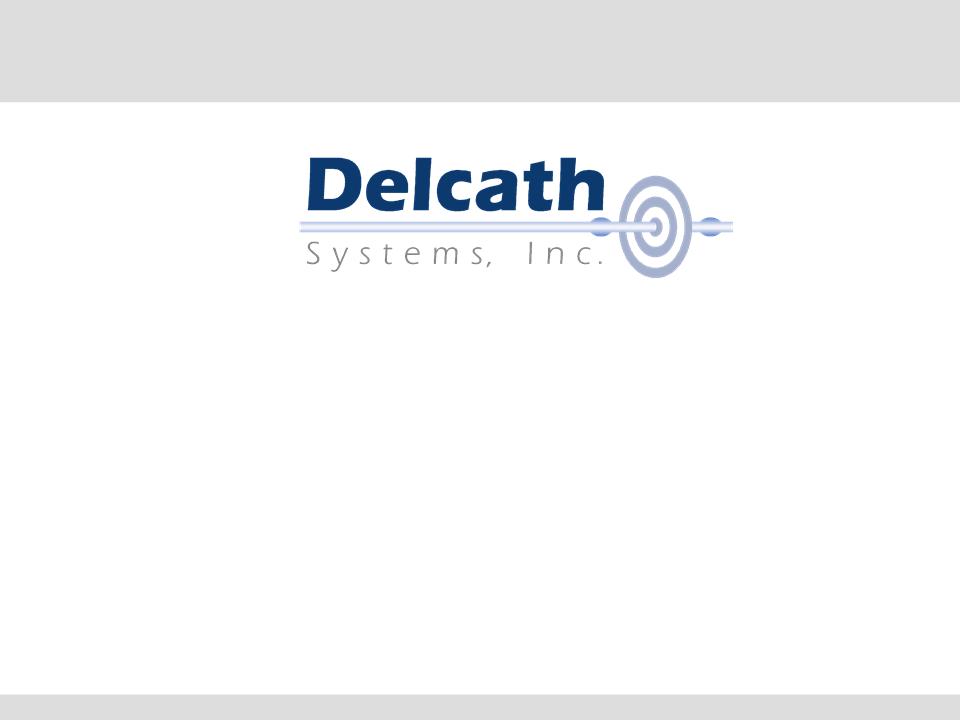
Investor Presentation
February 2011
NASDAQ: DCTH
Concentrating the Power of Chemotherapy TM

2
Forward-looking Statements
This presentation contains forward-looking statements, within the meaning of federal
securities laws, related to future events and future financial performance which
include statements about our expectations, beliefs, plans, objectives, intentions,
goals, strategies, assumptions and other statements that are not historical facts.
Forward-looking statements are subject to known and unknown risks and
uncertainties and are based on potentially inaccurate assumptions, which could
cause actual results to differ materially from expected results, performance or
achievements expressed or implied by statements made herein. Our actual results
could differ materially from those anticipated in forward-looking statements for many
reasons, including, the progress of our research and development programs and
future clinical trials; acceptance of our New Drug Application by the FDA and
approval thereof, acceptance of our CE mark Technical File by our Notified Body and
approval thereof; our ability to successfully commercialize the Delcath
Chemosaturation System in the United States and foreign markets and any
corresponding revenue, our ability to enter into distribution and strategic alliances in
the US and foreign markets and any corresponding revenue, the actions of
regulatory authorities; our ability to obtain reimbursement coverage for the
Chemosaturation System; overall economic conditions; the availability of capital;
and other factors described in the section entitled ‘‘Risk Factors’’ in our most recent
Annual Report on Form 10-K and the Quarterly Reports on Form 10-Q that we file
with the Securities and Exchange Commission.
securities laws, related to future events and future financial performance which
include statements about our expectations, beliefs, plans, objectives, intentions,
goals, strategies, assumptions and other statements that are not historical facts.
Forward-looking statements are subject to known and unknown risks and
uncertainties and are based on potentially inaccurate assumptions, which could
cause actual results to differ materially from expected results, performance or
achievements expressed or implied by statements made herein. Our actual results
could differ materially from those anticipated in forward-looking statements for many
reasons, including, the progress of our research and development programs and
future clinical trials; acceptance of our New Drug Application by the FDA and
approval thereof, acceptance of our CE mark Technical File by our Notified Body and
approval thereof; our ability to successfully commercialize the Delcath
Chemosaturation System in the United States and foreign markets and any
corresponding revenue, our ability to enter into distribution and strategic alliances in
the US and foreign markets and any corresponding revenue, the actions of
regulatory authorities; our ability to obtain reimbursement coverage for the
Chemosaturation System; overall economic conditions; the availability of capital;
and other factors described in the section entitled ‘‘Risk Factors’’ in our most recent
Annual Report on Form 10-K and the Quarterly Reports on Form 10-Q that we file
with the Securities and Exchange Commission.

3
Company Highlights
§ Focused on making established chemotherapeutic drugs work better in target organs
§ Chemosaturation delivers ultra-high dose chemotherapy to the liver
§ Successful Phase III trial results reported
§ Filed NDA for orphan drug and delivery apparatus and CE Mark for device
§ Positioned to address $3.0 billion European labeled market opportunity
§ Positioned to address $675 million US labeled market opportunity
§ Issued patents and orphan drug designations create competitive barriers
§ Deep and experienced management team
Concentrating the Power of Chemotherapy
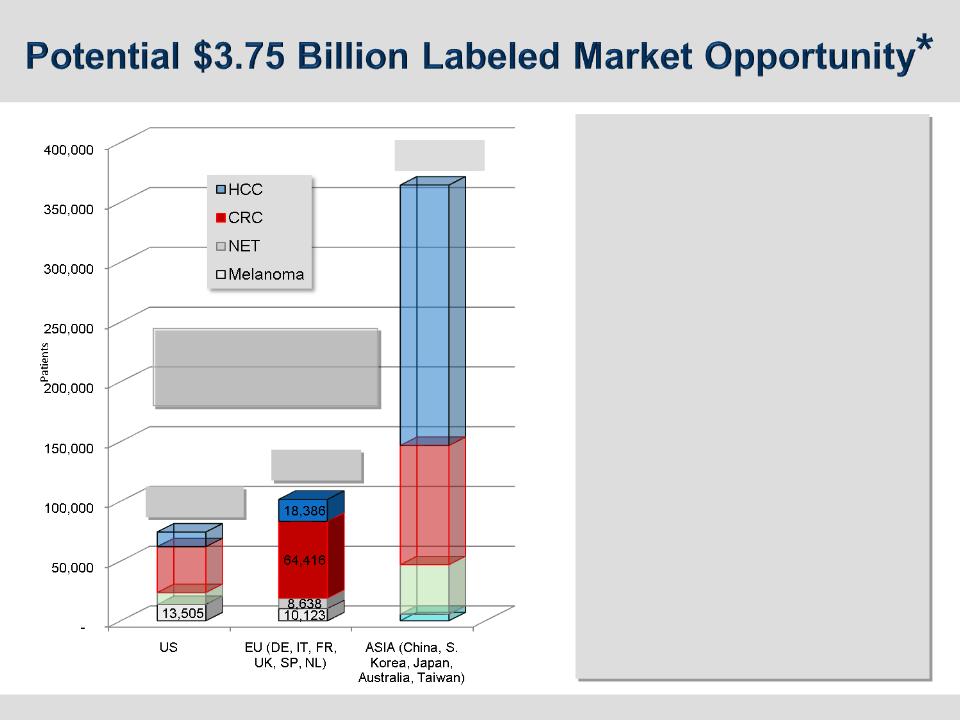
4
• Seeking initial indication for
Melanoma liver mets in USA
Melanoma liver mets in USA
• Seeking general indication in
EU for delivery of melphalan
to the liver permits physican
use on a broad range of liver
cancers
EU for delivery of melphalan
to the liver permits physican
use on a broad range of liver
cancers
• Asia potentially requires long
term clinical development
pathway
term clinical development
pathway
• Australia- Niche opportunity
(high melanoma incidence) -
device approval following EU
CE Mark
(high melanoma incidence) -
device approval following EU
CE Mark
• Significant potential label
expansion opportunity
expansion opportunity
Transparent Areas
Represent Potential
Additional Indications
Represent Potential
Additional Indications
13,505**
101,563
355,712
*TPM Total Potential Market
**TPM for potential U.S. labeled indications only

Spectrum of Liver Cancer Treatments
Existing Treatments Involve Significant Limitations
Type of Treatment
Advantages
Disadvantages
Systemic
ü
Non
-
invasive
ü
Repeatable
-
Systemic toxicities
-
Limited efficacy in liver
Regional
(
e.g.
,
IHP)
ü
Therapeutic effect
ü
Targeted
-
Invasive/limited repeatability
-
Multiple treatments are
required
Focal
ü
Isolated removal of tumor
-
90% unresectable
-
Invasive and/or limited
repeatability
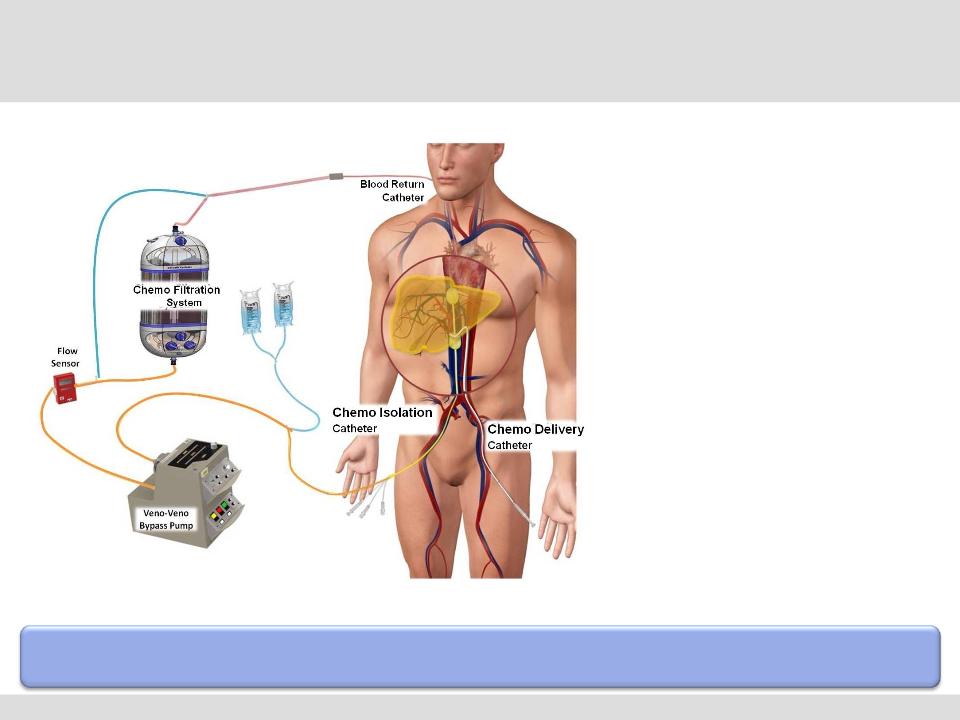
6
Advantages of
Chemosaturation
Chemosaturation
§ ISOLATION
§ Treats entire liver
§ SATURATION
§ Allows for ~ 100x
effective dose
escalation of drug
agents at tumor site
effective dose
escalation of drug
agents at tumor site
§ FILTRATION
§ Controls systemic
toxicities
toxicities
The Delcath Chemosaturation System
Note: Image not to scale.
Converts Traumatic Open Surgery to Minimally Invasive, Repeatable Procedure

7
Melphalan Dosing & Background
§ Well understood, dose dependant, tumor preferential, alkylating cytotoxic agent that
demonstrates no hepatic toxicity
demonstrates no hepatic toxicity
§ Manageable systemic toxicities associated with Neutropenia and Cytopenia
§ Drug dosing over 10x higher than FDA-approved dose via systemic IV chemotherapy
§ Dose delivered to tumor is approximately 100x higher than that of systemic IV
chemotherapy
chemotherapy
A Great Drug For Liver Cancer Therapy
Type
Dosing (mg/kg)
Multiple Myeloma (label)
0.25
Chemoembolization
0.6
2
Surgical Isolated Hepatic Perfusion (IHP)
1.5
0
Myeloablation
2.50
-
3.50
Chemosaturation (PHP)
3.00

8
What Chemosaturation Offers
Attractive Clinical and Economic Proposition For Patient and Providers
Patients:
• Significant improvement in disease control in the liver compared to standard
of care in patients with unresectable hepatic melanoma mets
of care in patients with unresectable hepatic melanoma mets
• Manageable systemic toxicities
• Time, so that primary cancers can continue to be treated
Physicians:
• Novel, targeted liver directed treatment to complement other cancer therapies
• Repeatable, percutaneous procedure
• Ability to treat the entire liver, including both visible and micro tumors
• Ability to continue treating patients for extra-hepatic disease
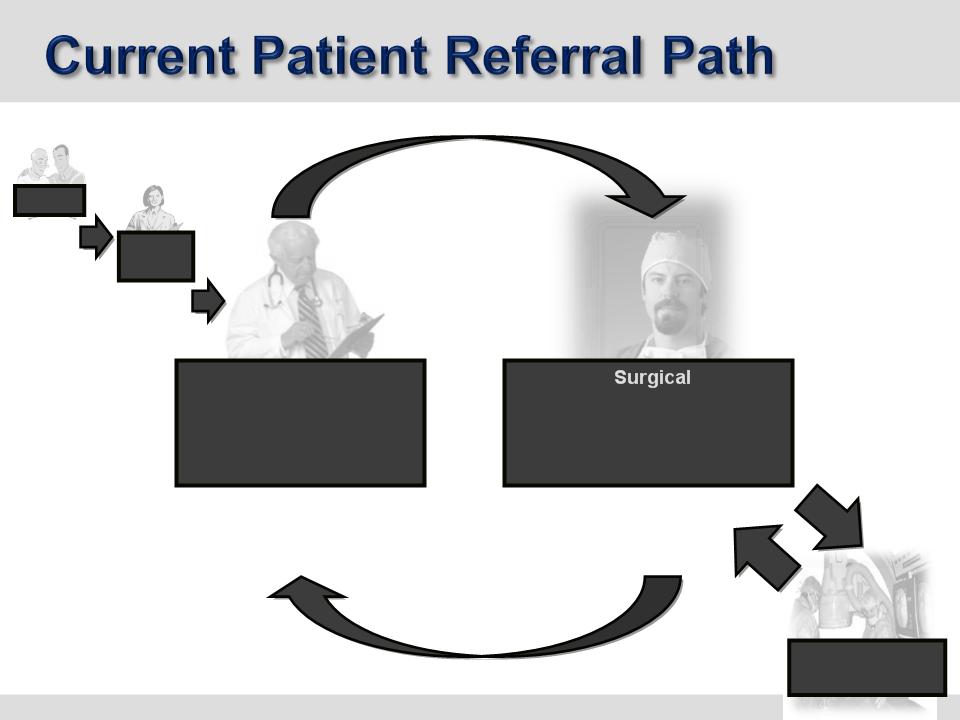
9
Interventional
Radiologist
Patient
Primary
Care
Medical
Oncologist
Offers systemic therapy to
treat Cancer
treat Cancer
Surgical
Oncologist
Offers resection or other focal
therapy to treat cancer in Liver
therapy to treat cancer in Liver
Transferred for
chemosaturation
chemosaturation
Diagnosis of
Cancer
Identification of liver
involvement
involvement
with no improvement
from systemic
therapy
from systemic
therapy
When liver disease is
controlled, patients return to
the Medical Oncologist for
additional systemic therapy
controlled, patients return to
the Medical Oncologist for
additional systemic therapy
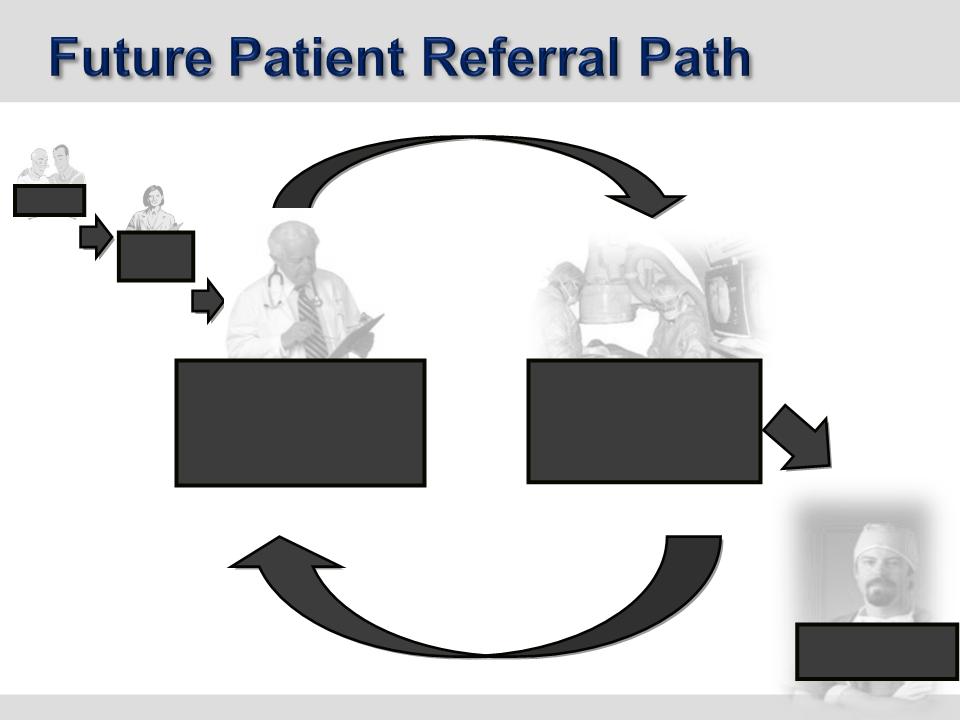
10
Interventional
Radiologist
Offers Chemosaturation
therapy
therapy
Patient
Primary
Care
Surgical
Oncologist
Diagnosis of
Cancer
Cancer
Resection
Medical
Oncologist
Offers systemic therapy to
treat cancer
treat cancer
Identification of liver
involvement
involvement
with no improvement
from systemic
therapy
from systemic
therapy
When liver disease is
controlled, patients return to
the Medical Oncologist for
additional systemic therapy
controlled, patients return to
the Medical Oncologist for
additional systemic therapy

11
Summary of Phase III Results
§ Primary endpoint exceeded
§ Secondary endpoints support results
§ OS cohort analysis - favorable
§ Safety profile - expected and consistent with
currently approved labeling for melphalan
currently approved labeling for melphalan
Trial Outcomes Favorable and Consistent with Special Protocol Assessment
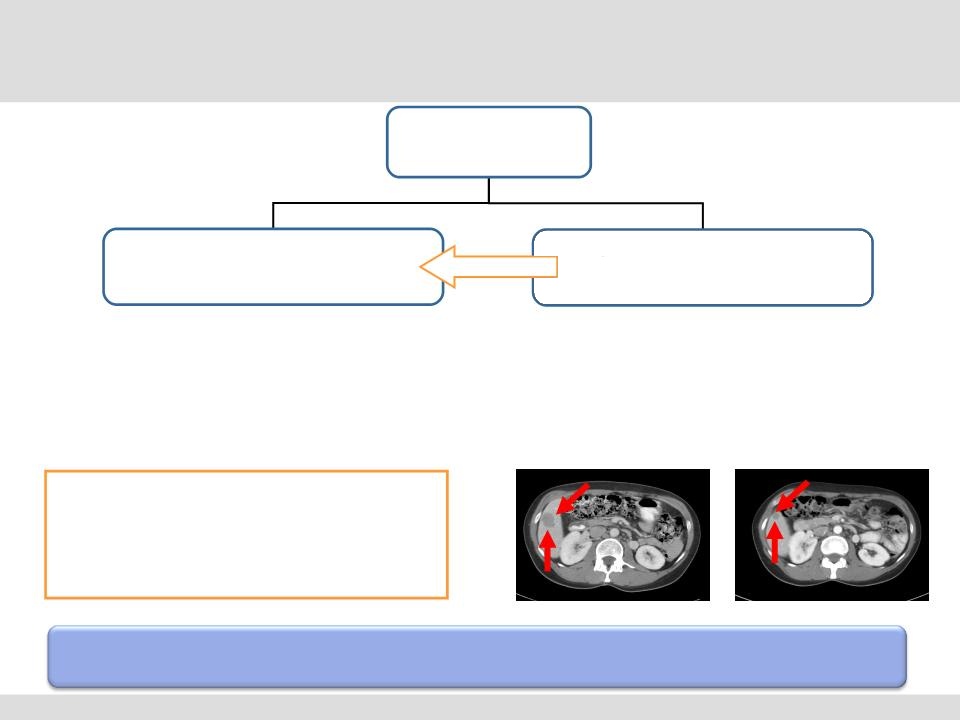
12
Phase III Clinical Trial Design
Randomized to CS
92 patients: ocular
or cutaneous melanoma
CS/Melphalan
Treat every 4 weeks x 4 rounds
(responders can receive up to 6 rounds)
Best Alternative Care (BAC)
Investigator and patient decision
(any and all treatments)
Cross-over
Primary Trial Endpoint
§ Statistically significant difference in Hepatic
Progression Free Survival (“hPFS”): p < 0.05
Progression Free Survival (“hPFS”): p < 0.05
§ Over 80% of Oncologic drugs approved by FDA
between 2005 - 2007 on endpoints other than
overall survival
between 2005 - 2007 on endpoints other than
overall survival
Modeled hPFS for Trial Success:
7.73 months (CS)
vs.
4 months (BAC)
Secondary Trial Endpoints
§ Hepatic response and duration of hepatic response
§ Overall response and duration of overall response
§ Overall Survival - Diluted by Cross Over
§ SAP calls for analysis of various patient cohorts
Fully Powered, 93 Patient, Randomized, Multi-Center NCI Led Study
Pre-CS (Baseline)
Post-CS (22+ Months)
Hepatic Response - Metastatic Melanoma
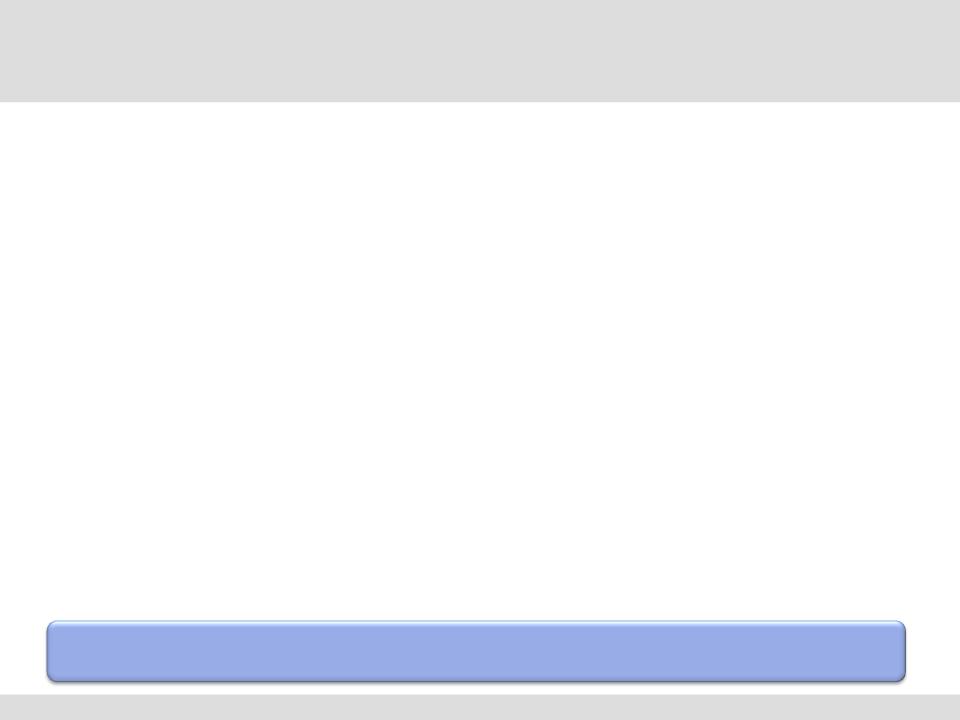
13
ASCO Presentation of Phase III Clinical Trial Results
§ Trial results exceed primary endpoint expectations; p value = 0.001
§ Treatment arm shows 5x median hPFS compared to control arm
§ CS/PHP median hPFS of 245 days compared to 49 days for BAC
§ Hazard Ratio = .301
§ Patients failed prior therapies (radiation, chemo, immuno, image guided local)
§ 90% Ocular, 10% Cutaneous - No difference in response
§ Overall PFS 186 vs. 46 days for BAC
§ 34% response rate for CS/PHP compared to 2% for BAC
§ 52% stable disease for CS/PHP compared to 27% for BAC
§ 86% overall clinical benefit (CR + PR + SD)
Strong Clinical Trial Results
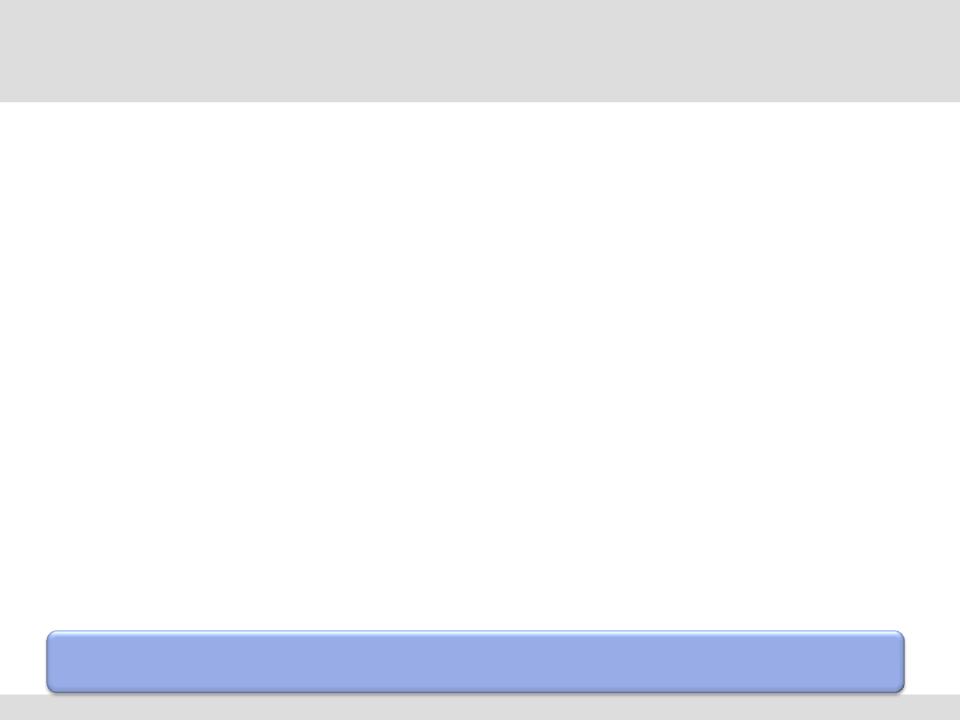
14
ASCO Presentation of Phase III Clinical Trial (cont.)
§ Majority of BAC patients crossed over and obtained similar response from treatment
§ Total 93 patient trial - 10 months median OS vs. 4 months expected 1 (due to cross over provision, most
patients received PHP/CS treatment)
patients received PHP/CS treatment)
§ OS cohort analysis - all positive trends
a) Median survival of 298 days for treatment arm compared to 124 in non-cross over BAC patients
b) Median survival of 398 days for BAC cross Over patients vs. 124 non-cross over BAC patients
§ OS Secondary endpoint - No difference in Kaplan-Meier curves(due to cross over treatment response)
§ Safety profile as expected - in line with current FDA approved labeling for IV administration of Melphalan
and Phase I CS/PHP study results
and Phase I CS/PHP study results
a) Treatment related Deaths:
§ 3/40 patients (7.5%) 3/116 procedures (2.6%)
§ Neutropenic Sepsis (n=2) 5%, Hepatic Failure (n=1) 2.5% (95% tumor burden)
§ Current approved labeling for Melphalan - 3% to 10% mortality rate.
b) Instituting REMS (Risk Evaluation & Mitigation Strategy) to address proper management associated with safe
use.
use.
Encouraging Survival Data With Expected Safety Profile
1 Source: Unger et. al. Cancer 2001;91: 1148
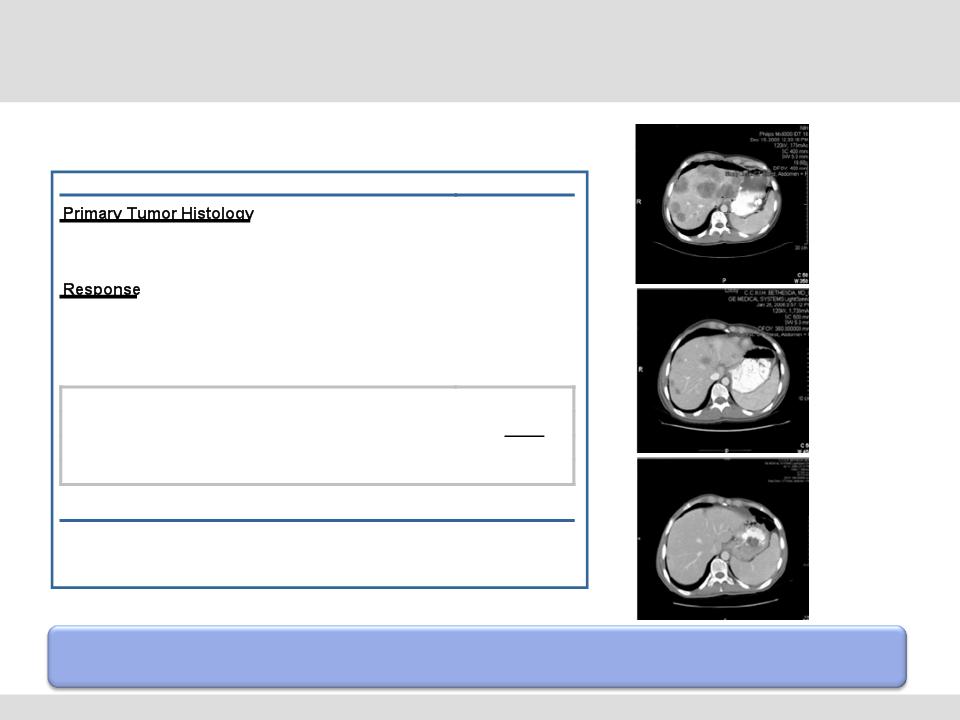
15
Phase I/II NCI Trials - Neuroendocrine
Neuroendocrine Tumor Trial Results (n=23)*
Promising Initial Response Rate in Attractive Market
Pre-CS
(Baseline)
Post-CS #2
(+4 Months)
Post-CS #1
(+6 Weeks)
*Presentation at American Hepato-Pancreato-Biliary Association 2008 annual meeting
Number (n)
Carcinoid
3
Pancreatic Islet Cell
17
Not Evaluable
(Toxicity
, Incomplete Treatment
Orthotopic
L
iver
T
ransplantation
)
4
Progressive Disease
1
Minor Response
/
Stable
D
isease
3
Partial Response (30.0%
-
99.0% Tumor Reduction)
13
Complete Response (No Evidence of Disease)
2
Objective Tumor Response
15
Objective Tumor Response Rate
79%
Duration (months)
Median Hepatic PFS
39
Overall Survival After
CS
40
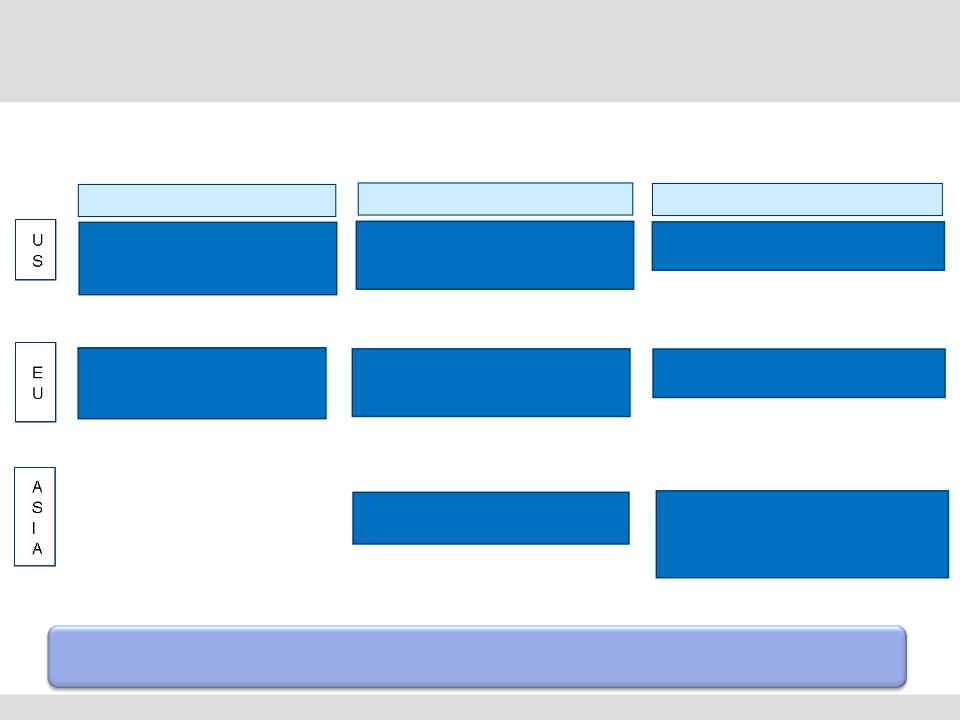
16
Product Development Pipeline
Robust Development Program Planned
• Melanoma liver mets
• Proprietary drug-melphalan &
apparatus
apparatus
• All liver cancers - melphalan
• Class III device
• 3rd party melphalan
• Additional drugs
• Other organs
• Broaden label
• Other liver cancers - melphalan
• Apparatus improvements
Initial Opportunity
Near Term (< 5 years)
Intermediate Term (> 5 years)
• Primary liver cancer (HCC)
• Drug-melphalan & apparatus
• Proprietary melphalan drug
approval
approval
• Apparatus improvements
• Additional drugs
• Other organs
• Broaden label
• Other liver cancers - melphalan
• Additional drugs
• Other organs
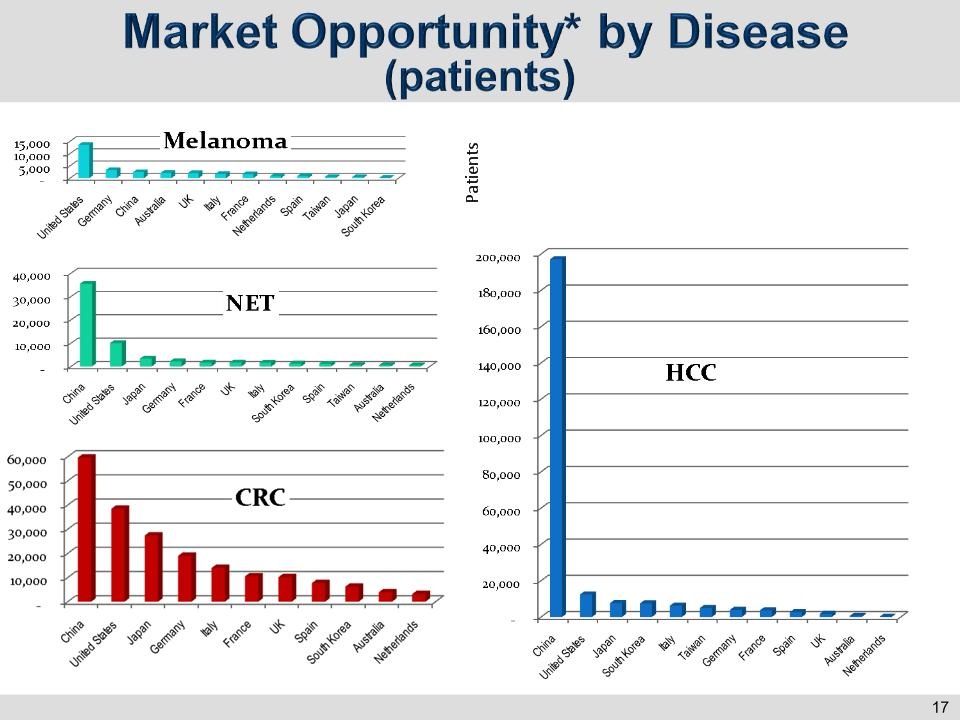
• US - largest opportunity for Melanoma
• China - largest opportunity for HCC
• CRC - largest opportunity worldwide
*TPM Total Potential Market
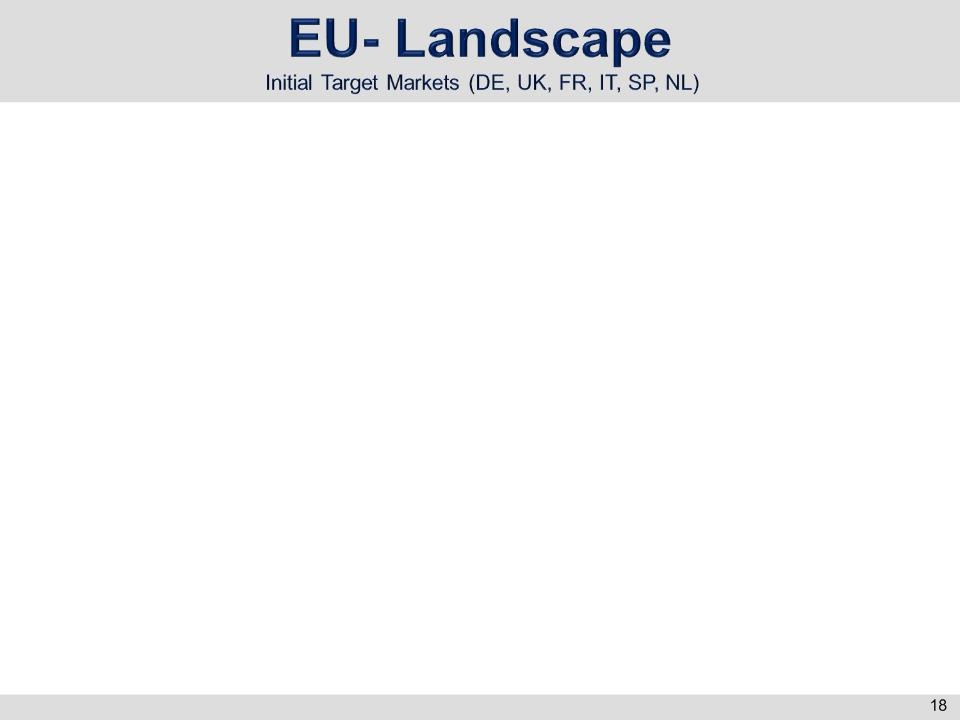
§ CE Mark approval in EU-covers 29 countries
§ 14 Countries currently have Melphalan for
injection commercially available
injection commercially available
§ Belgium (BE), Czech Republic (CZ), Germany (DE), Estonia (EE), Spain (ES), France
(FR), Ireland (IE), Italy (IT), Lithuania (LT), Luxembourg (LU), Netherlands (NL), Sweden
(SE), Slovakia (SK), United Kingdom (UK).
(FR), Ireland (IE), Italy (IT), Lithuania (LT), Luxembourg (LU), Netherlands (NL), Sweden
(SE), Slovakia (SK), United Kingdom (UK).
§ 6 initial target countries (DE, UK, FR, IT, SP, NL)
represent 89% of total potential market
represent 89% of total potential market
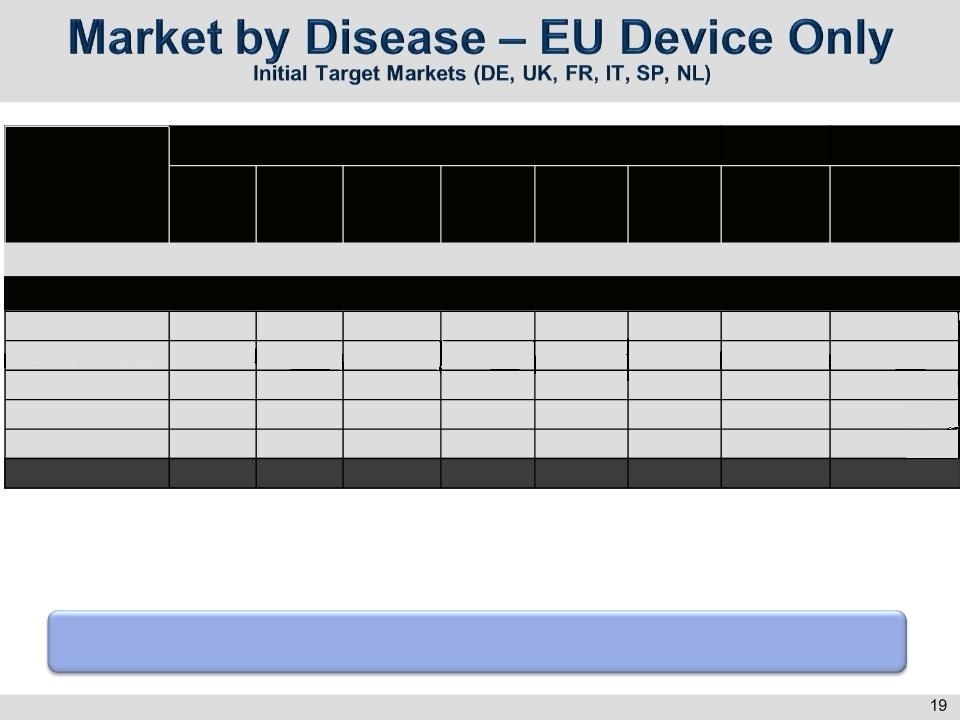
Germany
(Direct)
UK
(Direct)
France
(Indirect)
Italy
(Indirect)
Spain
(Indirect)
Netherlands
(Direct)
Total Potential
(patients)
Potential Market
($ millions)1,2,3
Total Potential Market #Patients
Ocular Melanoma
Cutaneous Melanoma
403
2,834
296
1,735
294
1,314
284
1,398
197
628
79
662
1,553
8,571
$46.6
CRC
18,978
10,155
10,490
13,952
7,694
3,151
64,420
$257.1
$1,932.6
$551.6
$259.2
HCC (Primary)
3,941
1,734
3,645
6,253
2,616
197
18,386
NET
2,168
1,624
1,645
1,579
1,185
438
8,639
TOTAL
25,087
13,513
15,780
21,784
11,495
3,786
91,445
$3,047.1
Europe is Potential $3.0 Billion Market Opportunity for Device Only
1. Assumes 2.5 treatments per patient
2. Assumes ASP of $12K (device only)
3. Assumes mix of direct sales and distributors
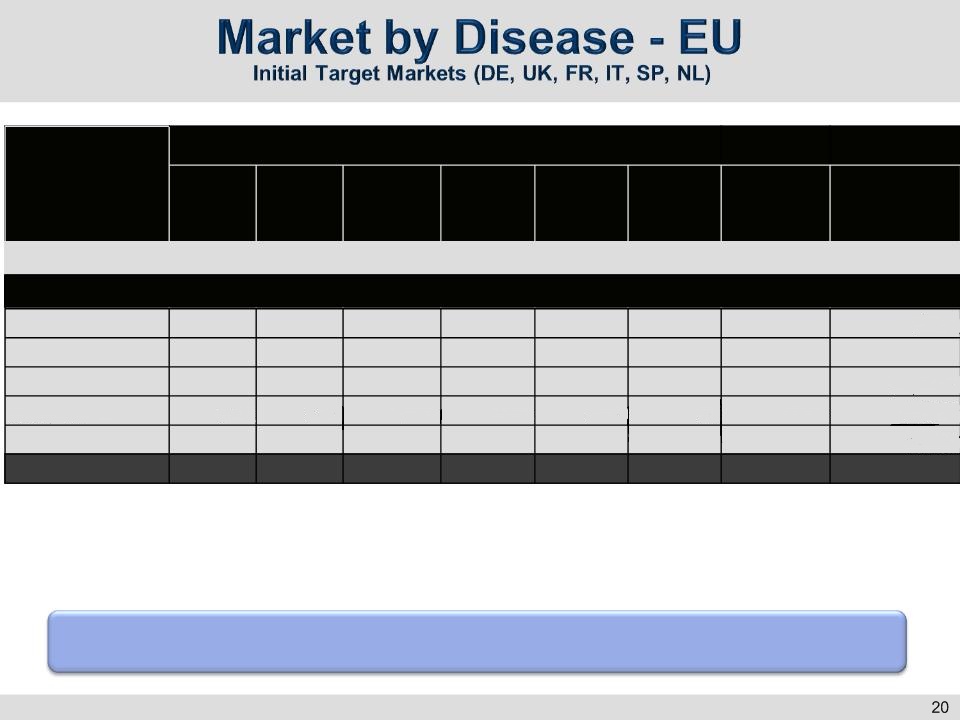
Germany
(Direct)
UK
(Direct)
France
(Indirect)
Italy
(Indirect)
Spain
(Indirect)
Netherlands
(Direct)
Total Potential
(patients)
Potential Market
($ millions)1,2,3
Total Potential Market #Patients
Ocular Melanoma
403
296
294
284
197
79
1,553
Cutaneous Melanoma
2,834
1,735
1,314
1,398
628
662
8.571
$62.1
$342.8
$2,576.8
$735.5
$345.6
CRC
HCC (Primary)
18,978
3,941
10,155
1,734
10,490
3,645
13,952
6,253
7,694
2,616
3,151
197
64,420
18,386
NET
2,168
1,624
1,645
1,579
1,185
438
8,639
TOTAL
25,087
13,513
15,780
21,784
11,495
3,786
91,445
$4,062.8
1. Assumes 2.5 treatments per patient
2. Assumes ASP of $16K, when Delcath branded melphalan is available
3. Assumes mix of direct sales and distributors
Europe Represents Potential $4.1 Billion Market Opportunity
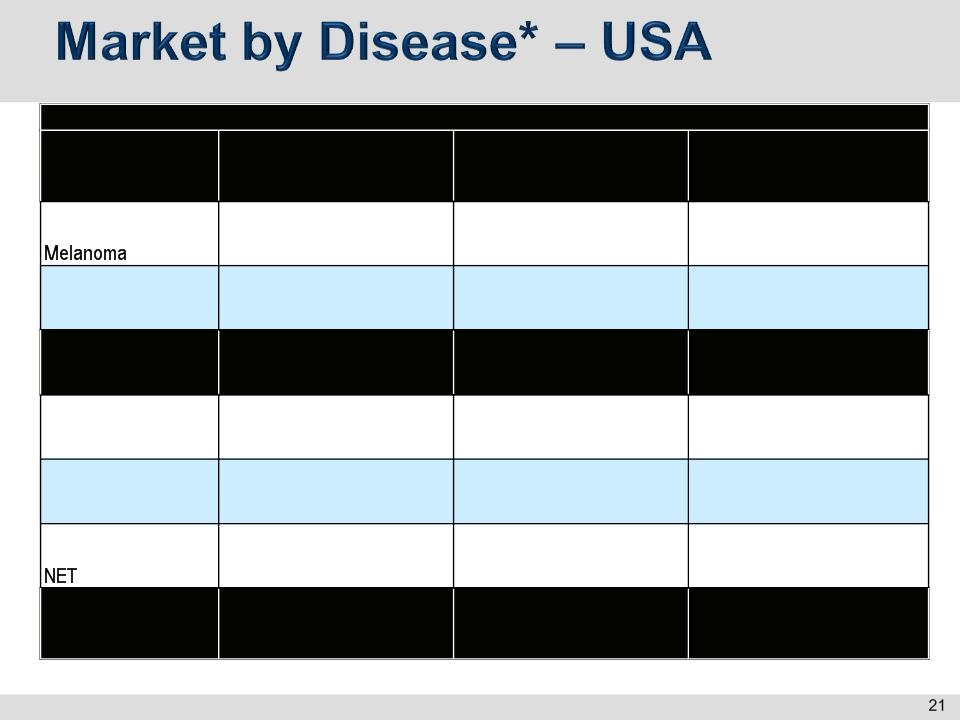
Liver Metastasis
Potential Market
# Patients
Potential Market
# Procedures
(Avg 2.5/patient)
Potential Market ($MM)
$20K ASP **
Ocular
1,622
4,055
$81.1
Cutaneous
Melanoma
11,883
29,708
$594.2
TOTAL MELANOMA
(Initial Expected Label)
13,505
33,763
$675.3
CRC
38,423
96,057
$1,921.1
HCC (Primary)
12,386
30,964
$619.3
9,986
24,965
$499.3
TOTAL OTHER
(Potential Label
Expansion)
Expansion)
60,794
151,985
$3,039.7
*TPM Total Potential Market
** Estimated ASP
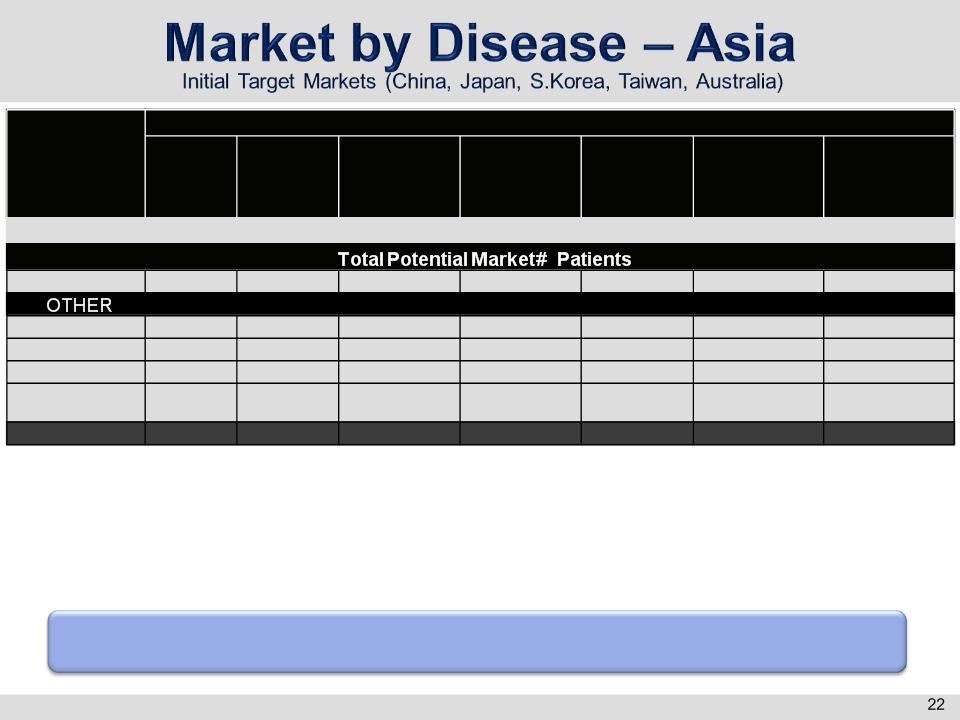
China
(Drug)
S. Korea
(Drug)
Japan
(Device)
Taiwan
(Drug)
Australia
(Device)
Total Potential
(patients)
Potential
Market 1,2,3,4
Market 1,2,3,4
HCC (Primary)
197,082
7,486
7,625
4,945
604
217,742
$4,899.2
CRC
59,644
6,219
27,396
2,762
3,891
99,912
$2,248.0
NET
35,503
1,275
3,355
608
562
41,303
$929.3
Ocular Melanoma
1,760
66
175
31
96
2,128
$47.9
Cutaneous
Melanoma
Melanoma
667
74
238
429
1,996
3,404
$76.6
OTHER TOTAL
292,229
14,980
38,376
8,315
5,057
358,957
$8,201.0
1. Assumes 2.5 treatments per patient
2. Assumes ASP of $9K
3. Assumes mix of systems with and without Delcath branded melphalan
4. Assumes sales by distributors
Asia Represents Potential $8.2 Billion Market Opportunity
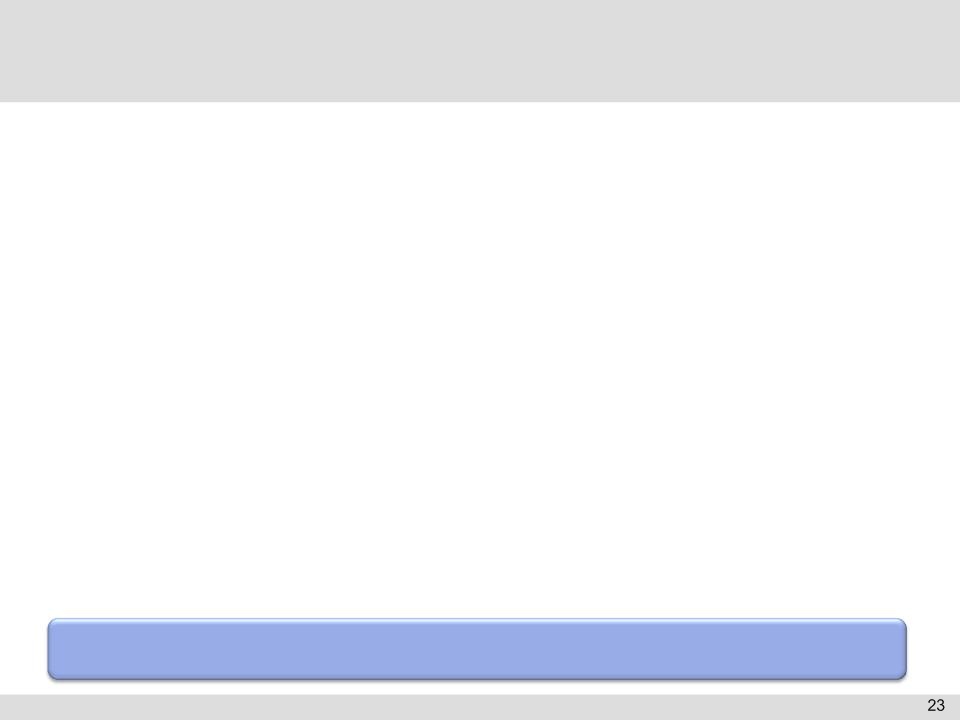
Reimbursement Strategy
Reimbursement is a Multi-Faceted Work in Progress
• Have retained leading reimbursement consultants
• Seek chemosaturation specific codes in U.S.:
Physician:
§ While undergoing FDA review, apply for CPT Category III code
§ Convert the Category III code to Category I following FDA approval
Hospital:
§ Apply for new ICD-9/10 procedure code to capture full procedure of
hepatic isolation and chemosaturation
hepatic isolation and chemosaturation
§ Request new DRG based on costs above those of existing DRGs and
clinical dissimilarity to other hepatic procedures in current DRGs
clinical dissimilarity to other hepatic procedures in current DRGs
• Europe: developing plans for initial focus countries

Three-Pronged Business Strategy
Commercialization
§ Gain regulatory approval
• Goal: receive CE approval for Class III device mid 2011
• Goal: receive FDA approval for drug and delivery system mid 2011
• Goal: receive EU approval for proprietary drug 2014
§ Build out direct specialty sales force for U.S.
§ Direct and Distribution partners OUS
Pursue Asian Strategic Alliances
§ Chi-Fu Trading Company Ltd. signed 2/9/2010 for Taiwan
§ Proprietary drug and delivery apparatus approval for HCC
Establish U.S. and EU Pharma Alliances
§ Co-develop and fund additional indications for Delcath Chemosaturation
System™
System™
Combination of Direct Sales Model, Partnerships & Distributors

2011 European Commercialization
§ Initially Target 6 Markets
§ 7 Sales territories initially to cover UK, Germany, Netherlands (Sales
and Medical Science Liaisons)
and Medical Science Liaisons)
§ Distributors in Spain, Italy, & France
§ 5 Clinical Specialists to support site initiations and training
§ Establish EU Centers of Excellence for Training and Support
Direct Sales Model in Northern Europe & Distributors in Southern Europe

2011 US Commercialization
§ Initial focus on top 50 cancer centers and referring community
hospitals
hospitals
§ 12 Sales & Medical Science Liaison territories ultimately
expanding to as many as 60 territories as revenues ramp
expanding to as many as 60 territories as revenues ramp
§ 5 Clinical Specialists to support site initiation and training
§ Utilize top centers from Phase III trial as Centers of Excellence
for training and support
for training and support
Direct Sales Model in the United States Focused on Leading Cancer Centers

Intellectual Property
Patent Protection
§ 7 issued U.S. patents, 10 foreign patents issued and 4 pending
§ Primary device patent set to expire August 2016
§ Post FDA approval up to 5 years of patent extension possible
FDA Protection
§ Orphan Drug Designation granted for melphalan in the treatment of ocular
melanoma, cutaneous melanoma and metastatic neuroendocrine tumors, as well as
for doxorubicin in the treatment of HCC
melanoma, cutaneous melanoma and metastatic neuroendocrine tumors, as well as
for doxorubicin in the treatment of HCC
§ Additional Orphan Drug applications to be filed for other drugs and indications,
including HCC and CRC
including HCC and CRC
Multiple Levels of Protection

Significant Combination Product Approval and Commercialization Experience
Deep and Experienced Management Team
Executive
Title
Prior Affiliation
(s)
Years of
Experience
Eamonn Hobbs
President and CEO
AngioDynamics
, E
-
Z
-
EM
30
David McDonald
CFO
AngioDynamics, RBC Capital Markets
2
8
Krishna Kandarpa, M.D., Ph.D.
CMO and EVP, R&D
Harvard, MIT, Cornell, UMass
3
7
Agu
stin Gago
EVP, Global Sales &
Marketing
AngioDynamics, E
-
Z
-
EM
2
9
Peter Graham
, J.D.
EVP & General Counsel
Bracco, E
-
Z
-
EM
1
6
John Purpura
EVP, Regulatory Affairs &
Quality Assurance
E
-
Z
-
EM,
S
anofi
-
A
ventis
2
7
Bill Appling
S
VP
Operations & Medical
Device R&D
AngioDynamics
25
Bernie Tyrrell
SVP N. American Sales &
Marketing
Epicept
, Otsuka,
Astra Zeneca,
Johnson &
Johnson, Eli Lilly
33
Dan Johnston
, Ph.D.
VP, Pharma R&D
Pfizer, Wyeth
10

Financials
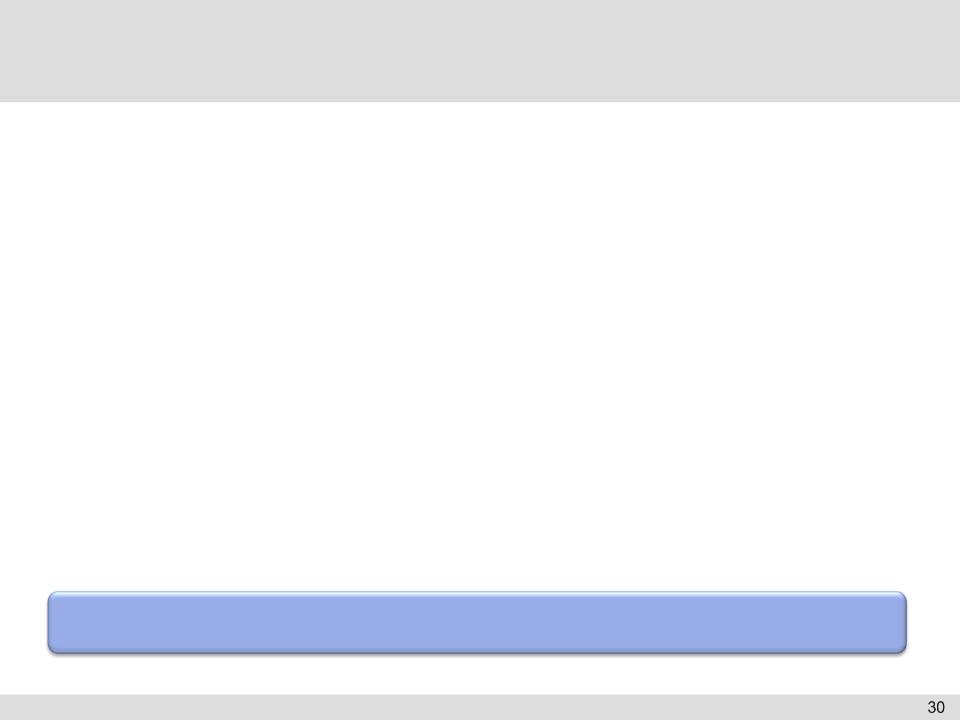
Financial Summary
Financial & Operating Overview
§ Follow On Offerings: Raised ~ $70 million in last twelve months
§ Burn Rate: Approximately $2.2 million/month
§ Cash: ~ $54.1 million at September 31, 2010
§ Debt: None
§ Shares Out: 42.9 million (49.3 million fully diluted*)
§ Institutional Ownership: ~ 21% at September 30, 2010
§ Market Capitalization: ~ $406 million as of January 31, 2011
§ Avg. Daily Volume (3 mos) ~ 906,000
* As of January 31, 2011 fully diluted includes an additional 3.8 million options at $4.98, 2.5 million warrants at $3.51, and 134,257 unvested restricted shares.
Capital Structure Strengthened Significantly in 2010

Company Highlights
§ Focused on making established chemotherapeutic drugs work better in target organs
§ Chemosaturation delivers ultra-high dose chemotherapy to the liver
§ Successful Phase III trial results reported
§ Filed NDA for orphan drug and delivery apparatus and CE Mark for device
§ Positioned to address $3.0 billion European labeled market opportunity
§ Positioned to address $675 million US labeled market opportunity
§ Issued patents and orphan drug designations create competitive barriers
§ Deep and experienced management team
Concentrating the Power of Chemotherapy

Appendix I. - Delcath Sources for Market Estimates
American Cancer Society. Cancer Facts & Figures 2010. Atlanta: American Cancer Society; 2010.
Alexander, Richard H., David L. Bartlett, and Steven K. Libutti. "Current Status of Isolated Hepatic Perfusion With or Without Tumor
Necrosis Factor for the Treatment of Unresectable Cancers Confined to the Liver." The Oncologist 5 (2000): 416-24.
Necrosis Factor for the Treatment of Unresectable Cancers Confined to the Liver." The Oncologist 5 (2000): 416-24.
Blake, Simon P., Karen Weisinger, Michael B. Atkins, and Vassilios Raptopoulos. "Liver Metastases from Melanoma: Detection with
Multiphasic Contrast Enhanced CT." Radiology 213 (1999): 92-96. Print
Multiphasic Contrast Enhanced CT." Radiology 213 (1999): 92-96. Print
Ferlay J, Shin HR, Bray F, Forman D, Mathers C and Parkin DM.
GLOBOCAN 2008, Cancer Incidence and Mortality Worldwide: IARC CancerBase No. 10 [Internet].
Lyon, France: International Agency for Research on Cancer; 2010. Available from: http://globocan.iarc.fr
GLOBOCAN 2008, Cancer Incidence and Mortality Worldwide: IARC CancerBase No. 10 [Internet].
Lyon, France: International Agency for Research on Cancer; 2010. Available from: http://globocan.iarc.fr
Nawaz Khan, Ali, Sumaira MacDonald, Ajay Pankhania and David Sherlock. "Liver, Metastases: [Print] - EMedicine Radiology."
Liver, Metastases. EMedicine - Medical Reference, 10 Feb. 2009. Web. <http://emedicine.medscape.com/article/369936-print>.
Liver, Metastases. EMedicine - Medical Reference, 10 Feb. 2009. Web. <http://emedicine.medscape.com/article/369936-print>.
Neuroendocrine Tumors. Practice Guidelines in Oncology- v.2.2009. National Comprehensive Cancer Network (NCCN). 2009.
Pawlik, Timothy M., Daria Zorzi, Eddie K. Abdalla, Bryan M. Clary, Jeffrey E. Gershenwald, Merrick I. Ross, Thomas A. Aloia,
Steven A. Curley, Luis H. Camacho, Lorenzo Capussotti, Dominique Elias, and Jean-Nicolas Vauthey. "Hepatic Resection for
Metastatic Melanoma: Distinct Patterns of Recurrence and Prognosis for Ocular Versus Cutaneous Disease." Annals of Surgical
Oncology 13.5 (2006): 712-20.
Steven A. Curley, Luis H. Camacho, Lorenzo Capussotti, Dominique Elias, and Jean-Nicolas Vauthey. "Hepatic Resection for
Metastatic Melanoma: Distinct Patterns of Recurrence and Prognosis for Ocular Versus Cutaneous Disease." Annals of Surgical
Oncology 13.5 (2006): 712-20.
